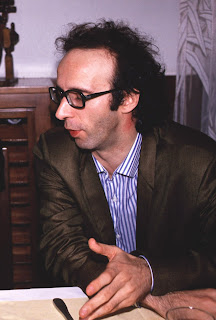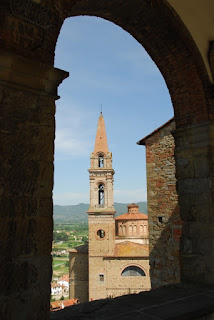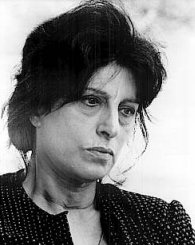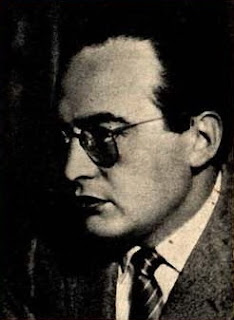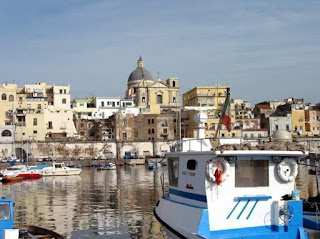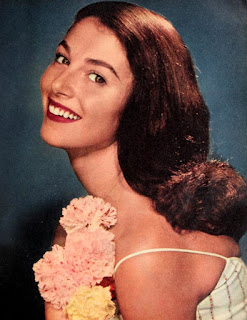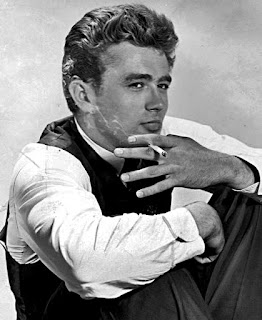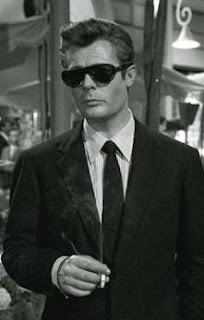Comic genius who appeared in 190 films
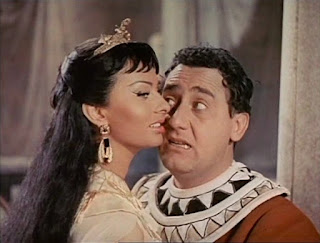 |
| Alberto Sordi with Sophia Loren in the 1954 film Due notti con Cleopatra (Two Nights with Cleopatra) |
He was 82 and had suffered a heart attack. Italy reacted with an outpouring of grief and the decision was taken for his body to lie in state at Rome's town hall, the Campidoglio.
Streams of his fans took the opportunity to file past his coffin and when his funeral took place at the Basilica of San Giovanni in Laterano it was estimated that the crowds outside the church and in nearby streets numbered one million people.
Only the funeral of Pope John Paul II, who died two years later, is thought to have attracted a bigger crowd.
| Sordi (right) in a scene from An American in Rome (1954) which established him as a comic character actor |
He appeared in two movies directed by Federico Fellini - The White Sheik and I vitelloni. In the latter, he played an oafish layabout, something of a simpleton but an effeminate and vulnerable character to whom audiences responded with warmth and affection due to Sordi's interpretation.
It was Sordi's eye for the foibles of quirks of the Italian character that identified him as an actor of considerable talent. His films often had the simple titles of the Italian stereotypes he was sending up, such as The Seducer, The Bachelor, The Husband, The Widower, The Traffic Cop and The Moralist.
Some were black comedies, some slapstick farces, others more serious dramas. Along with Vittorio Gassman, Ugo Tognazzi and Nino Manfredi, he made up a quartet that has been described as Italy's equivalent of the Ealing comedy school.
 |
| Alberto Sordi in the 1962 black comedy Mafioso |
His father encouraged an interest in music and by the age of 10 Sordi was singing in the Sistine Chapel choir. At 16 he went to Milan to study at drama school but was told he would never be successful unless he shed his thick Roman accent. In the event, the accent and distinctive voice became part of his popularity.
Back in Rome, he became popular in radio shows and as a music hall act before landing the voice-over part for the Laurel and Hardy films, employing the bogus English accent he had used in a music hall sketch.
Eager for more work in the burgeoning movie industry, he hung around the cafes in Piazza di Spagna, where he befriended Fellini and his fellow director, Vittorio De Sica. After working as an extra, he landed his first important role was as an air force cadet in Tre Aquilotti (Three Eaglets) in 1941.
 |
| Sordi (in the foreground) lounges outside a cafe in I vitelloni |
Poking fun at Italy's obsession with things American, Sordi played Ferdinand 'Nando' Mericoni, a young Roman who is so in awe of the American lifestyle he tries to make his room look like a Hollywood set, pretends he is from Kansas City and lives out everyday situations as if he were an actor in an American film. He makes up for his inability to speak English by making American vocal sounds. Sordi would return to the theme years later, in 1968, with an Italian in America, which he directed himself.
In the opinion of the critics, the most accomplished performance of his career was as a middle-class Italian in Mario Monicelli's hard-hitting 1977 film Un Borghese Piccolo Piccolo (A Very Small Petit Bourgeois), who takes vengeance after seeing his child killed in a robbery.
Sordi never married but was the long-time partner of the actress Andreina Pagnani. Later in life, he lived quietly with his dogs and his two sisters in a splendid villa near the Baths of Caracalla, indulging his interests in opera, collecting antiques and supporting his football team, AS Roma.
Over a career that spanned five decades, he won seven David di Donatello awards for best actor - the most won by anyone in that category - and four awards from the Italian National Syndicate of Film Journalists. He also received a Golden Lion for lifetime achievement at the Venice Film Festival in 1995.
Less than a week after his death, the mayor of Rome announced that the gallery of shops opposite the Palazzo Chigi would be renamed Galleria Alberto Sordi in his memory.
 |
| The Isola Tiberina adjoins the Trastevere district |
The Trastevere district has evolved from its working class roots into one of Rome's most fashionable neighbourhoods, certainly among young professionals, who are attracted by its pretty cobbled streets and the wealth of inexpensive but chic restaurants. There are interesting attractions for visitors, too. Apart from some fine churches, the area boasts the Botanical Garden of Rome, the lovely Isola Tiberina, an island in the middle of the river on which is built an old hospital and a church, and the lively Porta Portese Sunday market.
Rome hotels from Booking.com
Travel tip:
Numbering John Keats, Mary Shelley and Casanova among its fans, the Piazza di Spagna is a beautiful square noted for the famous Spanish Steps leading up to the Trinità dei Monti church. Keats had a house next to the steps on the right looking up from the square. The steps tend to be crowded with tourists during the day but thin out after 10pm, when the square still looks glorious under the street lights. Leading off the square, Via Condotti has become home to Rome’s most exclusive shops, including Prada and Gucci. There are plenty of restaurants and bars around the square, although they can be expensive. However, inexpensive beer, ice creams and roasted chestnuts can be bought from street vendors.
More reading:
Giulietta Masina - Fellini's muse and wife of 50 years
Otto e mezzo - the greatest Fellini movie of them all?
How tough-talking Roman actress Anna Magnani became an Oscar-winning star
Also on this day:
1682: The birth of anatomist Giovanni Battista Morgagni
1707: The birth of Venetian playwright Carlo Goldoni
1873: The birth of the brilliant tenor Enrico Caruso
Selected books:
A History of Italian Cinema, by Peter Bondanella and Federico Pacchioni
Home
Travel tip:
Numbering John Keats, Mary Shelley and Casanova among its fans, the Piazza di Spagna is a beautiful square noted for the famous Spanish Steps leading up to the Trinità dei Monti church. Keats had a house next to the steps on the right looking up from the square. The steps tend to be crowded with tourists during the day but thin out after 10pm, when the square still looks glorious under the street lights. Leading off the square, Via Condotti has become home to Rome’s most exclusive shops, including Prada and Gucci. There are plenty of restaurants and bars around the square, although they can be expensive. However, inexpensive beer, ice creams and roasted chestnuts can be bought from street vendors.
More reading:
Giulietta Masina - Fellini's muse and wife of 50 years
Otto e mezzo - the greatest Fellini movie of them all?
How tough-talking Roman actress Anna Magnani became an Oscar-winning star
Also on this day:
1682: The birth of anatomist Giovanni Battista Morgagni
1707: The birth of Venetian playwright Carlo Goldoni
Selected books:
A History of Italian Cinema, by Peter Bondanella and Federico Pacchioni
Home
